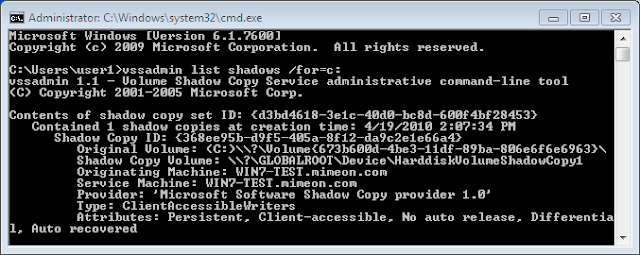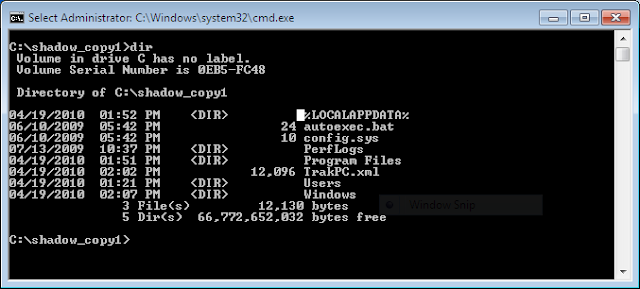Just a quick post on passwords saved in the browser. After my post on credentials stored in the Windows 7 Vault, I started to think about browser passwords and the risks that lurk there. Chris Gates had a similar thought which he posted about yesterday, and Larry Pesce wrote up a detailed analysis last September.
I personally disable this feature in Firefox but a strong master password would certainly be advisable if you do save passwords within Firefox. While I do not use this feature, I do use a lot of Firefox add-on's. Gmail Notifier, Xmarks Bookmarks, and Echofon Twitter add-on's to name a few. So I naturally turned my attention to those.
I pondered where these add-on's were storing saved credentials. The answer is in same place Firefox stores them. What a more ironic way to verify this than to use a Firefox add-on (SQLLite Manager) to query the signons.sqlite database.
As previously covered by Gates and Pesce, conversion of the encrypted passwords is trivial as long as you also have access to the key3.db and there is no master password configured. If you are interested in the details of this, I suggest checking out the documentation here and tool available here.
While this may have been obvious to others, it was not to me. That is one of the many reasons I love this field.
Update August 09, 2010: Jeremiah Grossman presented his work entitled Breaking Browsers: Hacking Auto-Complete at Black Hat last week. The presentation included examples of using XSS to steal saved credentials in the Firefox and Chrome password managers.
Tuesday, June 29, 2010
Wednesday, June 16, 2010
Post Exploitation Pivoting with the Windows 7 Vault
 I have been poking around with the updated version of Credential Manager in Windows 7 which has been commonly referred to as "Stored User Names and Passwords" in previous version of Windows. Much like its predecessors, the current version of Credential Manager still uses Data Protection API (DPAPI), but Windows 7 now stores saved credentials within the Windows Vault. Such credentials can include; user names and passwords used to log on to network shares, websites that use Windows Integrated Authentication, Terminal Services, and many third party applications such as Google Talk .
I have been poking around with the updated version of Credential Manager in Windows 7 which has been commonly referred to as "Stored User Names and Passwords" in previous version of Windows. Much like its predecessors, the current version of Credential Manager still uses Data Protection API (DPAPI), but Windows 7 now stores saved credentials within the Windows Vault. Such credentials can include; user names and passwords used to log on to network shares, websites that use Windows Integrated Authentication, Terminal Services, and many third party applications such as Google Talk .Credential Manager and DPAPI has been under scrutiny in the past. Cain & Able has had a decoder for some time. More recently, researchers from Standford University presented at Black Hat DC 2010 about their DPAPI research.
While breaking the crypto associated with this feature might be useful (i.e. if credentials are re-used elsewhere), it is not always necessary. The purpose of the Credential Manager is to pass saved credentials to resources commonly accessed by the user. Once you have gained access to a host as the unprivileged user (take you pick of code execution bugs, Adobe pdf's seem to be popular these days), then you can certainly leverage this feature to pivot to resources referenced within the Windows Vault. Keeping a low forensics profile would be preferred, so I attempted to find existing command line tools that were already available on the host. After poking at Windows 7 for a while, I found an undocumented utility called vaultcmd.exe in the System32 folder that appeared useful. The following is the output of the supported switches for vaultcmd;
The /list switch allows us to view all Windows Vaults available on the host for the current authenticated user.
It appears in this example, the two default Vaults are the only ones that exist on this host. Also note that since the user is already authenticated, the vaults are in an unlocked state. Running the /listproperties switch against each vault lists some more details, including the number of credentials saved in each location.
Finally, the /listcreds switch gives us our newly found targets.
It appears, our unprivileged user has stored domain administrator credentials for two domain controllers. While this is certainly more secure than running as domain administrator locally, DPAPI adds no added security in this scenario since local access to this host has been gained. Now that we have completed our reconnaissance, we can pivot and access the servers by simply using the installed tools at our disposal. In the following example, I use psexec and the SET command to verify I have domain administrator access to DC-01 without having to specify a user name and password.
I was also able to access the the domain controller's Admin shares via the NET USE command using stored credentials within the Windows Vault.
net use P: \\dc-01\C$In addition, since the Windows Server Administrator tools were also already installed on the host, I also verified that the Windows Vault was passing these credentials to Active Directory Users and Computers and the Remote Desktops Client.
I attempted to change some of the default settings for the vault using the /setproperties switch. For Example; it appears that vaultcmd has the ability to set a password on a vault;
vaultcmd /setproperties:"Windows Vault" /set:AddProtection /value:PasswordBut any attempt I made was met with the error; "The request is not supported.". So I would be interested to see if anyone can find additional documentation on this utility or the Windows Vault. I have not been successful in finding anything to date.
vaultcmd /setproperties:"Windows Vault" /set:DefaultProtection /value:Password
Some have suggested that any password management tool that hooks into the browser or operating system is more of a risk than a stand alone application that requires additional authentication mechanisms. While I generally agree with this, the emerging capabilities of attack and forensic tools that acquire volatile memory from a host (and consequently decrypted credentials), only require a bit more patience. Of course such tools, must be loaded on the compromised host increasing the forensic footprint the intruder leaves behind.
Happy Hunting!
Monday, June 7, 2010
Forensics Analysis: Windows Shadow Copies
Microsoft Windows Vista and 7 includes the Volume Shadow Copy Service (VSS) which are leveraged by System Restore and Windows Backup features of the Operating System. By default, this service is turned on and the amount of backups stored depends on the disk size and settings. There is a potential wealth of forensic evidence available within Shadow Copies and even though I am not the first to write about leveraging Shadow Copies for forensic purposes, I thought it was worth writing a quick post here.
Vssadmin is a command line tool that can be used to display current VSS backups. To do so, use the syntax;
Make sure to note the Shadow Copy Volume you want to analyze and use it with Mklink to create a symbolic link to the backup. For example;
Happy Hunting.
References:
MSDN Blog: A Simple Way to Access Shadow Copies in Vista
Updated June 10, 2011
I came across a great post from @4n6woman on using Log Parser to parse mounted VSC's and preserve the MD5 HAshes and Metadata for easy querying. Thought I would share.
Vssadmin is a command line tool that can be used to display current VSS backups. To do so, use the syntax;
vssadmin list shadows /for=c: (where c: is the volume your working with).Here is an example of the output;
Make sure to note the Shadow Copy Volume you want to analyze and use it with Mklink to create a symbolic link to the backup. For example;
mklink /d C:\shadow_copy1 \\?\GLOBALROOT\Device\HarddiskVolumeShadowCopy1\ (note: the trailing back slash as it is needed).Once created you can browse the symbolic link as you would any folder and restore files of interest by copying them out.
Happy Hunting.
References:
MSDN Blog: A Simple Way to Access Shadow Copies in Vista
Updated June 10, 2011
I came across a great post from @4n6woman on using Log Parser to parse mounted VSC's and preserve the MD5 HAshes and Metadata for easy querying. Thought I would share.
Thursday, June 3, 2010
PaulDotCom EP200: The Hackers for Charity Podcast-a-Thon
Tomorrow I will be trekking south the hang with the PaulDotCom crew for the 8 hour recording of Episode 200. They will be streaming live and it looks like they are pulling out all the stops for this episode. There will be interviews, tech segments, and appearances from HD Moore, Johnny Long, Lenny Zeltzer, Ron Gula, Jack Daniel, and a couple of surprise guests.
The show is dedicated to raising awareness and money for Johnny Long's Hackers for Charity. If you are not familiar with the work Johnny is doing with HFC, take a look! Donations can be made via the donate button on the PaulDotCom website or via the HFC Get Involved Page. So help out with a donation and listen live tomorrow!
The show is dedicated to raising awareness and money for Johnny Long's Hackers for Charity. If you are not familiar with the work Johnny is doing with HFC, take a look! Donations can be made via the donate button on the PaulDotCom website or via the HFC Get Involved Page. So help out with a donation and listen live tomorrow!
Subscribe to:
Posts (Atom)








